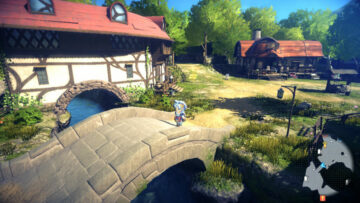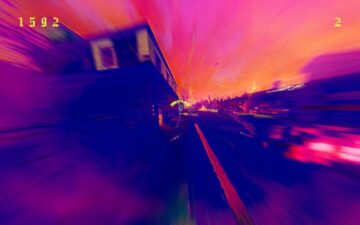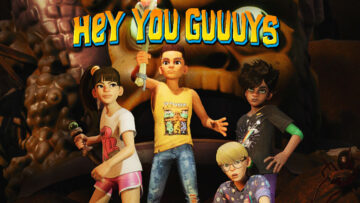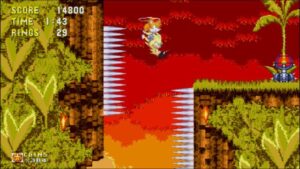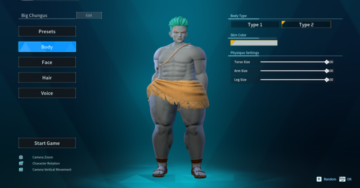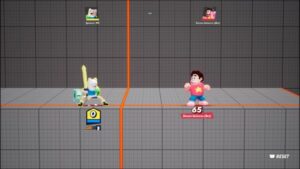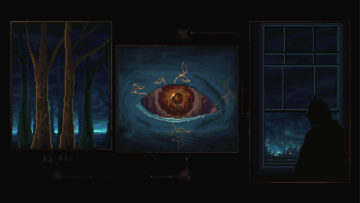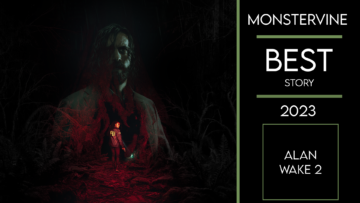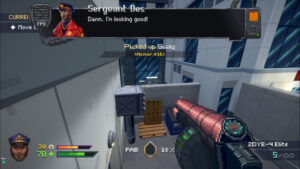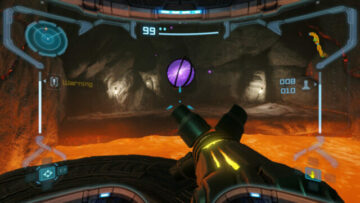You know how it goes: pass through the cave opening, open the vault door, and you are blinded. A white light envelopes everything then slowly fades giving you your first glimpse of a massive new horizon for you to explore. But here, it’s different. There is no white light. Instead you see the void. The all encompassing sea of stars, each spec on the horizon the potential for something new.
Starfield
Developer: Bethesda Game Studios
Price: $70
Platform: PC (reviewed), Xbox Series X/S
MonsterVine was supplied with a PC code for review
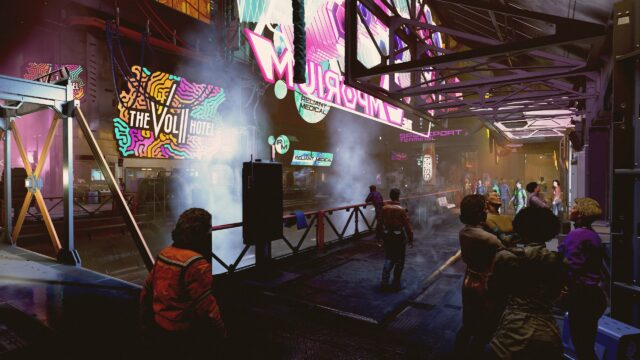
Bethesda games have a rhythm. One quest leads to another, that one leads to a cave, next to a ruin, then four hours later you finally finish the first quest after finishing eight others you found along the way. Only to find one more after finishing that. Their course is very well known and very well tread, but despite everything it still works. No one makes open world games like Bethesda Game Studios and they’ve banked on that.
With Starfield, Bethesda has moved on from a single country or state, they’ve gone further than a planet. They have decided to build a galaxy. Chock full of the standard Bethesda fair. Massive open worlds working on semi clockwork rotations. NPCs run at you at Mach 6 to tell you something. Caves are full of bandits and raiders ready and willing to be blasted to death. It’s incredibly ambitious and safe at the same time, but despite everything, it works.
Not only does it just work as a game, Starfield is genuinely the best performing game Bethesda has put out at launch. It’s kind of a miracle. Especially with how many moving parts there are. It is incredibly important to note that the game will not function properly without an SSD, if you plan to play this on PC make sure you have one, as the game will not work without it.
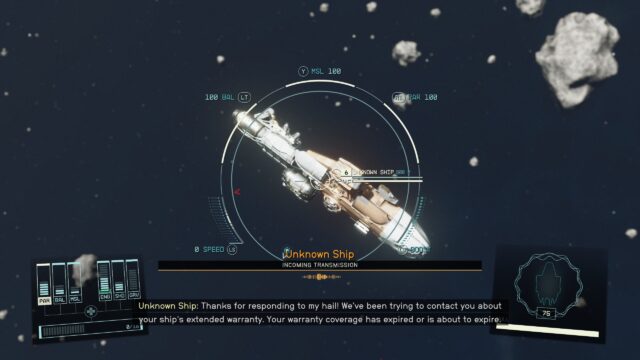
Starfield is DENSE. Almost frustratingly dense. There’s spaceships, base building, weapon and armor customization, crew management, and general character-build planning. The game goes out of its way to present you with as many paths possible out the gate but spends little time explaining much of it. A lot of time can be spent figuring out how the crew’s skills correlate to how your ship works, or how to transfer materials between bases, but when everything starts to click together Starfield starts to sing.
Unlike the previous few Bethesda games, Starfield doesn’t expect you to do everything. For the first time in close to a decade, Bethesda expects you to build a specific character, and find that character’s path through the universe. There are around 100 skills to choose from, of the five selected each have with five ranks that change dramatically as they level. Far more than any character could accomplish with the 100 level cap. If you want to be a hot shot Han Solo type you can, but you might miss out on some base building focusing on the ship leveling tree. Maybe you want to be a scientist exploring each planet in the galaxy talking your way out of problems, that’s an option too. But the key point is that there’s always enough to do and enough planets to see that choosing one path doesn’t feel like it’s locking you out of anything.
It’s an interesting universe. Much of it is clearly based on the NASA aesthetic; clean, white interiors with exposed scaffolding, but there are a lot of other clear influences from other sci-fi staples. For example: Neon is a sleazy cyberpunk style city slightly at odds with the rest of the galaxy that feels really visually distinct from the rest of the game. In fact that can be said for most of the major planets in Starfield, they’re incredibly varied in visuals and tone. On one planet you can be helping locals deal with space cougars on Space Texas and on another rooting out political corruption and fighting for worker’s rights.
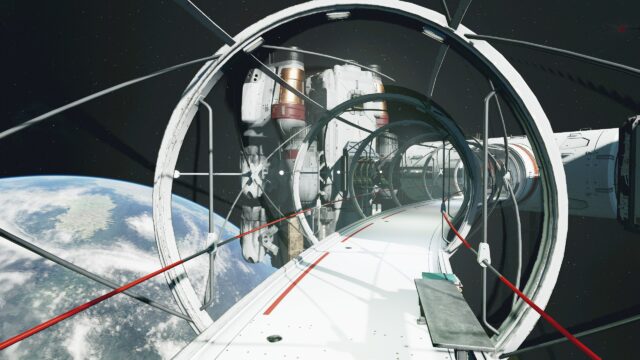
The main plot itself isn’t the most spectacular story but it is interesting. It goes in directions you might not expect and asks a lot of more existential and introspective questions than you’d get from a game at this scale. You want to see where it goes out of curiosity, to know what’s out there.
Minute to minute gameplay in Starfield isn’t much different than Bethesda’s Fallout games. You’re walking around environments talking to people, taking new quests, and occasionally killing some alien animals for said people. There’s the usual changes, a new locking picking mini game and a small mini game for persuasion checks. The largest change is the gunplay, unlike Fallout the gunplay feels snappy and fast. Running around and blasting spacers has never felt so good. Boost packs and Zero-G add a really fun element to combat as well, letting you fly around shooting people from above and getting bounced around from the recoil of your shotgun in zero gravity.
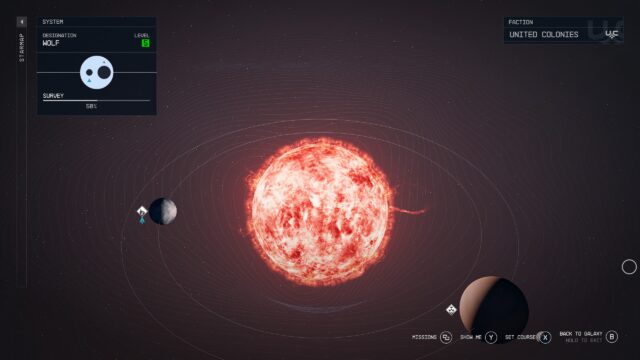
The biggest change is instead of one map, there are thousands. Nearly every planet and moon in Starfield is explorable. Some have major cities on them full of NPCs and quests, and others are mainly barren with some abandoned facilities or pirate bases to explore. Occasionally you’ll find a planet or system filled with a long quest chain, but those are a little rarer. Save for quest specific locations each planet’s surface is randomly generated, instead of the whole planet being explorable it randomly generates a tile about the size of Fallout 3’s map. At first, this is a little frustrating, but you’ll quickly realize that the tile is large enough to explore for hours and that each planet has multiple biomes and resources that drastically change how it looks, making dropping down in various locations really exciting and unique, as you never really know what you’ll find. Each planet with life has mostly unique plants and animals specific not only to that planet but also to the biome you land in, additionally, many animals have slight cosmetic differences depending on the biome if they’re in more than one.
The variety from planet to planet is staggering. You can go from the ice caps of one planet to tropical rainforests near its equator. Maybe one planet is sub zero across its surface save for a spot filled with vents of radioactive gas. The gravity of each planet is different as well, you can jump nearly 30ft into the air, and another barely at all. This needs to be accounted for before landing on the planet so you can bring the right equipment or you might end up with an injury that can severely affect gameplay. Like a cough that cuts oxygen every 20 seconds.
Find a planet you like and you can decide to build a home there. The base building is similar to what was in Fallout 4 but a little more streamlined. You make pre-made pieces out of materials you find on your travels and then can fill those bases with crew members you pick up on your journey who help run the base at maximum efficiency. Besides aesthetics, the real purpose of base building is to mine for resources so you can upgrade your weapons, armor, and of course bases. Like much of the game, it’s shockingly deep and can be pretty addictive, especially as you start building interplanetary supply chains between multiple bases. Each planet has a variety of resources and picking the right place on a planet for a specific resource can lead to some fun exploration both in and out of space.
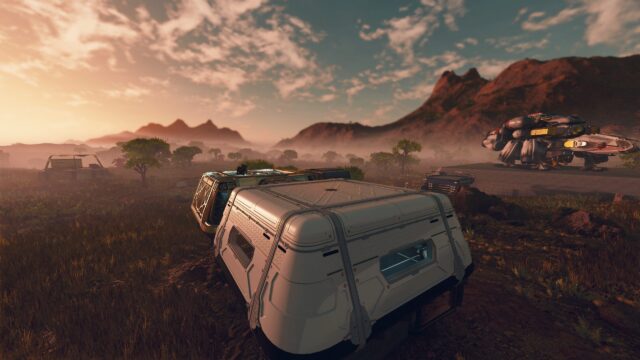
To get from planet to planet you’ll need a ship, which the game graciously gives you within the first 10 minutes of the game. Once you’re in the ship, the galaxy is more or less yours to explore. Choosing planets to fly to is similar to Mass Effect’s galaxy map, you’re given a star chart and from there you can pick which system you want to go to, and what planets are there. Additionally, it points out any interesting points of interest on the planet and the system itself. Abandoned space stations, NPC ships, pirate settlements, etc.
You only fly your ship in orbit around planets and space stations, from here you can hail or fight other ships. Ship combat feels simple but great, especially as you level your piloting skill and start to take better control of your ship. It really expands when you start to customize your ship. You can change literally every aspect of it, from engines, guns, shape, and interior. Nearly every aspect of the ship can be changed to whatever you want from it. Some of the descriptions of what certain ship parts do is a bit unclear and it can be frustrating putting something together only to find out that it wasn’t quite what you wanted, but it’s just a quick jump back into the menu to redo.
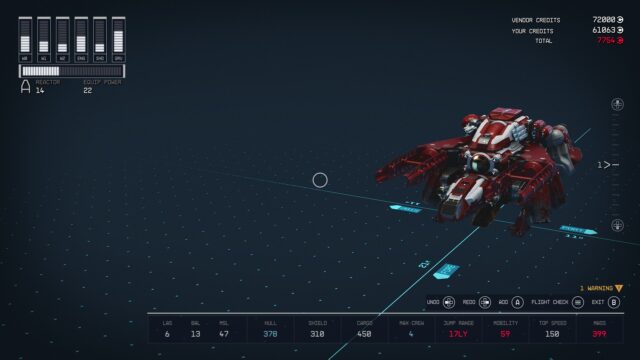
Besides moving you around, the ship also functions as a base for you and your companions. It’s a great feeling seeing it fill up with familiar faces that you pick up along the journey. All of them have little moments where they talk to each other or you as you make your way through the galaxy. It makes the ship feel like a tangible place. These companions also have perks that can add to the performance of your ship, all of these pull from the same perk tree available to you, but they don’t actually tell you what they do in the crew menu leading you to cross reference your own perk tree with what they have and it’s incredibly frustrating and time consuming. It muddles up what should be a relatively simple system.
Which is indicative of a lot of Starfield’s more frustrating moments. Mainly that it doesn’t tell you much. The game wants you to discover a lot through gameplay, but the game is incredibly dense with a lot of systems, and it doesn’t have a tutorial for a lot of it. Leading to entire mechanics just not being utilized because you just don’t know they’re there. Or overcomplicating systems because there’s no clear path to it from another. A lot of this goes away as you start to play more but it can make the first 10-20 hours of the game feel incredibly confusing and aimless at times. Most of the information in this review is not clearly told to you and is something the game expects you to find on your own.
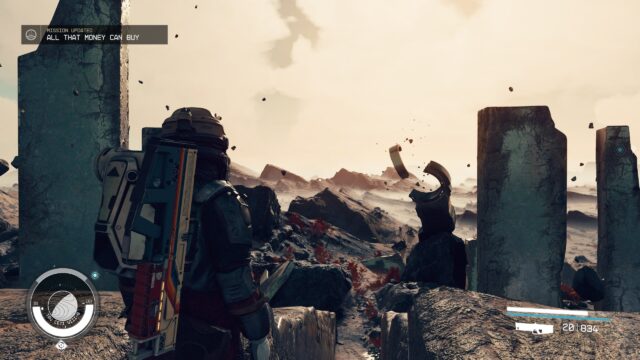
The moments you do find that information it’s exciting, like a larger world is opening up to you. Things finally start to make sense, in a way it feels like you and your character are finding out this information at the same time. That’s what role playing games are all about, the immersion, feeling lost in a character and world. It becomes part of your story, the path that your character is taking. But it can also feel aimless and annoying like the game is withholding information and portions of the game from you.
In a lot of ways Starfield feels like Bethesda Game Studios magnum opus, it’s a collection of almost every design idea and concept they worked on since Daggerfall nearly 30 years ago. A lot of these design choices can be seen as them pushing exploration past simple silhouettes on the horizon but into the joy of discovering mechanics themselves. It’s a weird sometimes messy game, but one that will have a stranglehold on your life. Every moment feels like you could find something new. Feel something new. Be something new.
You look back out at the void, each one of those dots. Now shimmering white lights. It’s never felt so exciting to feel lost.
 The Final Word
The Final Word
Starfield is a Bethesda game pushed to the absolute limits, it’s a good thing that Bethesda is still the very best at what they do.
MonsterVine Rating: 4.5 out of 5 – Great
- SEO Powered Content & PR Distribution. Get Amplified Today.
- PlatoData.Network Vertical Generative Ai. Empower Yourself. Access Here.
- PlatoAiStream. Web3 Intelligence. Knowledge Amplified. Access Here.
- PlatoESG. Automotive / EVs, Carbon, CleanTech, Energy, Environment, Solar, Waste Management. Access Here.
- PlatoHealth. Biotech and Clinical Trials Intelligence. Access Here.
- ChartPrime. Elevate your Trading Game with ChartPrime. Access Here.
- BlockOffsets. Modernizing Environmental Offset Ownership. Access Here.
- Source: https://monstervine.com/2023/08/starfield-review-ad-astra-per-aspera/
- 10
- 100
- 125
- 20
- 30
- a
- About
- above
- Absolute
- accomplish
- accounted
- across
- actually
- Ad
- add
- Additionally
- aesthetic
- affect
- after
- ago
- alien
- All
- almost
- along
- also
- always
- ambitious
- an
- and
- animals
- Another
- any
- Anything
- ARE
- around
- as
- aspect
- At
- available
- away
- back
- Banked
- barren
- base
- based
- BE
- because
- becomes
- before
- being
- besides
- BEST
- Bethesda
- bethesda game studios
- Better
- between
- Biggest
- Bit
- Boost
- both
- bring
- build
- Building
- but
- CAN
- Cap
- Cave
- certain
- chain
- chains
- change
- changed
- changes
- character
- Checks
- choices
- choose
- Choosing
- Cities
- City
- clear
- clearly
- click
- close
- code
- collection
- combat
- companions
- concept
- confusing
- consuming
- Control
- Corruption
- could
- country
- course
- Crew
- cross
- Curiosity
- customization
- Cyberpunk
- deal
- death
- decade
- decide
- decided
- deep
- depending
- Design
- despite
- differences
- different
- directions
- discover
- distinct
- do
- does
- door
- down
- dramatically
- drastically
- dropping
- each
- efficiency
- element
- encompassing
- end
- engines
- enough
- entire
- environments
- equipment
- especially
- etc
- Every
- everything
- Example
- Exciting
- existential
- expands
- expect
- expects
- explaining
- exploration
- explore
- Exploring
- faces
- Facilities
- fact
- fair
- familiar
- far
- FAST
- feel
- few
- fight
- Fighting
- filled
- Final
- Finally
- find
- finding
- finish
- First
- first time
- five
- Fly
- focusing
- For
- four
- from
- frustrating
- full
- fun
- function
- functions
- further
- Galaxy
- game
- gameplay
- Games
- Games Like
- GAS
- General
- generated
- generates
- Get
- getting
- given
- gives
- Giving
- glimpse
- go
- goes
- gone
- good
- gravity
- great
- guns
- has
- Have
- help
- helping
- here
- Home
- horizon
- hot
- hours
- How
- How To
- HTTPS
- ICE
- idea
- if
- immersion
- important
- in
- incredibly
- information
- injury
- instead
- interest
- interesting
- into
- Is
- IT
- ITS
- itself
- journey
- jpg
- jump
- just
- Key
- kind
- know
- known
- Land
- Landing
- large
- larger
- largest
- later
- launch
- lead
- leading
- leads
- less
- Level
- level cap
- Life
- light
- like
- limits
- Little
- locations
- Long
- Look
- looks
- lost
- lot
- main
- mainly
- major
- make
- MAKES
- Making
- management
- many
- map
- massive
- materials
- maximum
- maybe
- Mechanics
- Members
- might
- mine
- minute
- minutes
- moment
- moments
- Moon
- more
- most
- mostly
- moved
- moving
- much
- multiple
- Nasa
- Near
- nearly
- need
- needs
- Neon
- never
- New
- Next
- no
- not
- now
- NPC
- Odds
- of
- on
- once
- One
- only
- open
- Open World
- opening
- Option
- or
- Orbit
- Other
- Others
- out
- own
- Oxygen
- part
- parts
- pass
- Past
- path
- PC
- People
- per
- performance
- performing
- perks
- pick
- picking
- pieces
- piloting
- place
- plan
- planet
- planets
- planning
- plants
- plato
- plato data intelligence
- platodata
- platogaming
- play
- Playing
- playing games
- Point
- Points
- political
- possible
- potential
- present
- pretty
- previous
- problems
- purpose
- pushed
- pushing
- put
- putting
- quest
- questions
- quests
- quick
- quickly
- quite
- Raiders
- Ranks
- Rating
- Ready
- Real
- realize
- really
- relatively
- resource
- Resources
- REST
- review
- Rhythm
- right
- rights
- role
- Run
- running
- safe
- Said
- same
- save
- Scale
- Sci-Fi
- scientist
- SEA
- Sea of Stars
- see
- seeing
- seen
- selected
- Semi
- sense
- Series
- settlements
- severely
- shape
- ships
- shooting
- shot
- shotgun
- should
- similar
- Simple
- since
- single
- Size
- skill
- skills
- small
- So
- Solo
- some
- something
- Space
- specific
- Spot
- SSD
- standard
- staples.
- Star
- Starfield
- Stars
- start
- State
- stations
- still
- Story
- streamlined
- style
- Sub Zero
- supply
- Supply chains
- sure
- Surface
- system
- Systems
- Take
- taking
- talk
- talking
- tangible
- tell
- texas
- than
- that
- The
- The Game
- The Vault
- their
- Them
- themselves
- then
- there
- These
- they
- thing
- things
- this
- those
- thousands
- Through
- time
- times
- to
- together
- too
- transfer
- tree
- tutorial
- type
- unclear
- unique
- universe
- unlike
- up
- upgrade
- utilized
- variety
- various
- Vault
- very
- visuals
- walking
- want
- wanted
- wants
- was
- way
- ways
- weapons
- well
- What
- whatever
- when
- where
- white
- WHO
- whole
- will
- willing
- with
- within
- without
- Work
- worked
- working
- works
- world
- Worlds
- xbox
- xbox series
- years
- you
- your
- zephyrnet
- zero
